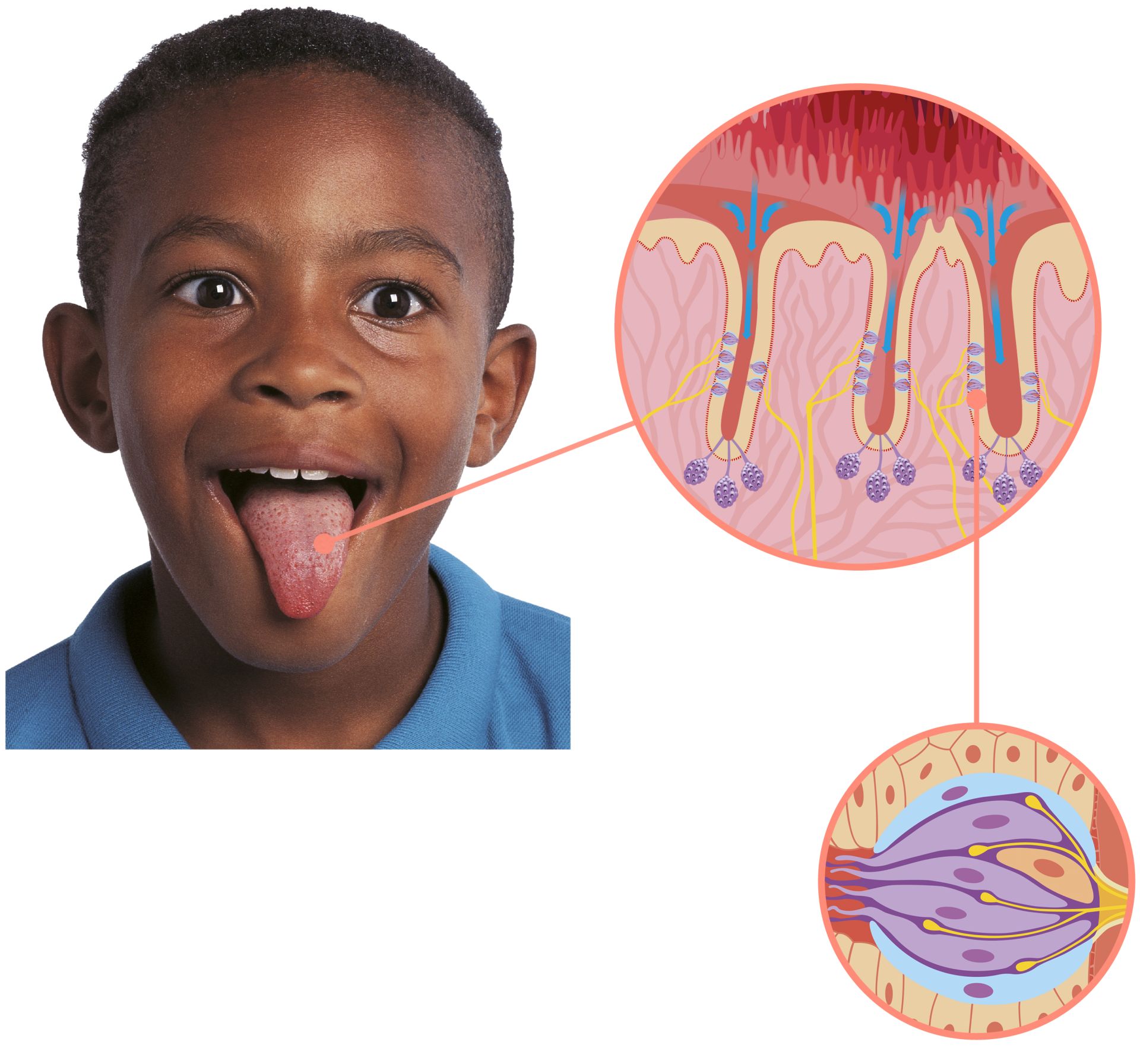Each taste bud is packed with taste cells,. Webthe gustatory sensory system enables you to be aware of chemical composition and flavors of foods. Web — your gustatory system, which mediates your sense of taste, helps you walk the line between health and illness. The gustatory system guides you towards foods that are energy rich and keeps you away from food that could make you sick. Webthere are four types of papillae, based on their appearance ( figure 28. 1 ):
Within the structure of the papillae are taste buds that contain specialized gustatory receptor cells for the transduction of taste stimuli. Web — taste perception is mediated by gustatory receptors, also known as taste buds, responding to chemical stimulation on the dorsum of the tongue and in parts of the larynx, pharynx and epiglottis. Detecting a taste (tastant) is. Webthe sweet taste is the sensitivity of gustatory cells to the presence of glucose dissolved in the saliva. Other monosaccharides such as fructose, or artificial sweeteners such as aspartame (nutrasweet™), saccharine, or sucralose (splenda™) also. Web — they are known as gustatory organs ( taste [latin = gustus]) which transduce chemical taste stimuli into electrical signals and then transfer them to one of the three cranial nerves involved in the sense of taste. This article will discuss the anatomy and function of taste buds. Webgustatory gps guide your taste buds to the closest chili s. This platform, a site for classified ads, has fundamentally transformed the way people interact within their local areas. Webthe taste buds contain specialized gustatory receptor cells that respond to chemical stimuli dissolved in the saliva. These receptor cells activate sensory neurons that are part of the facial and glossopharyngeal nerves. Web — gustatory information leaves taste buds through three cranial nerves, facial (cranial nerve vii), glossopharyngeal (ix) and vagus (x), whose branches innervate distinct portions of the tongue, palate, pharynx and larynx.
These receptor cells activate sensory neurons that are part of the facial and glossopharyngeal nerves. Web — gustatory information leaves taste buds through three cranial nerves, facial (cranial nerve vii), glossopharyngeal (ix) and vagus (x), whose branches innervate distinct portions of the tongue, palate, pharynx and larynx.
The Power Of A Picture: Tvrj Mugshots That Shape Public Opinion
Time Zone Wizardry: Convert 4 PM PST To CST With Magic
Nixa Transformed: Witnessing A City's Remarkable Evolution
